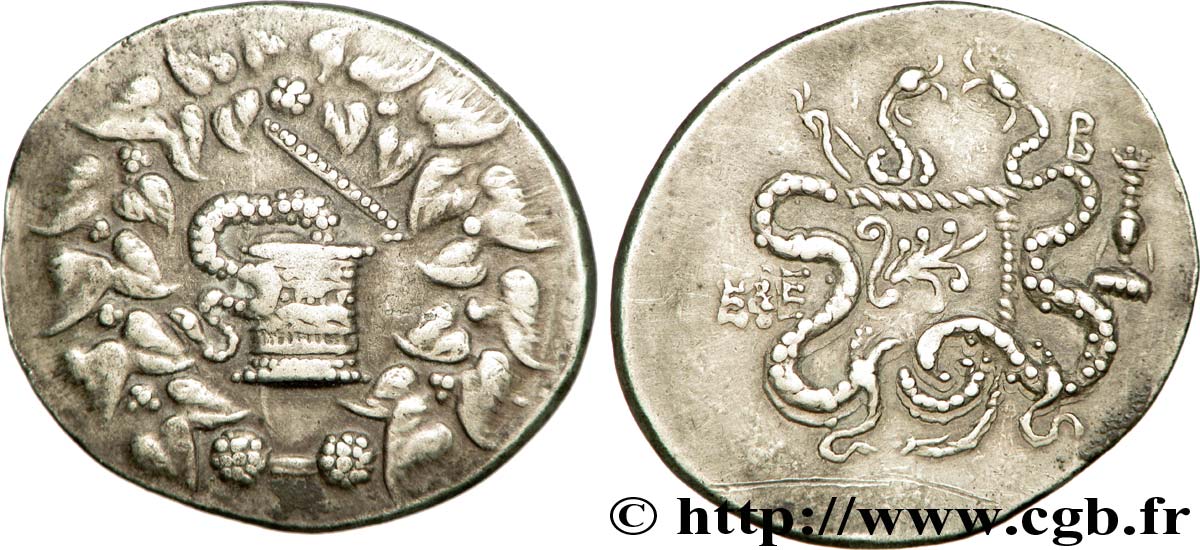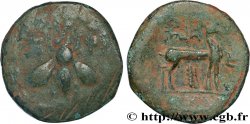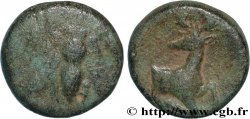v43_0186 - IONIA - EPHESUS Cistophore
MONNAIES 43 (2010)
Starting price : 230.00 €
Estimate : 350.00 €
Realised price : 230.00 €
Number of bids : 1
Maximum bid : 327.00 €
Starting price : 230.00 €
Estimate : 350.00 €
Realised price : 230.00 €
Number of bids : 1
Maximum bid : 327.00 €
Type : Cistophore
Date: an 2
Mint name / Town : Éphèse
Metal : silver
Diameter : 28,5 mm
Orientation dies : 12 h.
Weight : 12,52 g.
Rarity : R2
Emission: 28
Coments on the condition:
Exemplaire sur un flan large et ovale, parfaitement centré des deux côtés. Droit de qualité exceptionnelle pour ce type de monnayage. Très joli revers de style fin ; une rayure à l’exergue. Très jolie patine de collection ancienne avec des reflets dorés
Catalogue references :
Obverse
Obverse legend : ANÉPIGRAPHE.
Obverse description : Ciste mystique de laquelle s'échappe un serpent ; le tout dans une couronne dionysiaque.
Reverse
Reverse description : Arc et goryte orné d'un aplustre entre deux serpents ; dans le champ à droite, la tête d’Artémis d’Éphèse surmontée de sa coiffe.
Reverse legend : EFE/ B.
Reverse translation : (d’Éphèse/ an 2).
Commentary
Ethnique légèrement tréflé. Même coin de droit que l’exemplaire de l’American Numismatic Society (ANS) Kleiner, p. 21, n° 6c, pl. XI/7 et que celui de la collection von Aulock, n° 7842. Monnayage de type royal. Pour cette série, nous avons cinq coins de droit et quatorze coins de revers pour vingt-quatre exemplaires. C’est une série rare.








 Report a mistake
Report a mistake Print the page
Print the page Share my selection
Share my selection Ask a question
Ask a question Consign / sell
Consign / sell
 Full data
Full data



